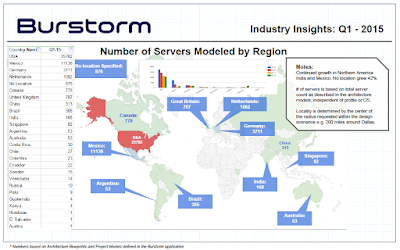Twitter Feed
DISA Chief Technologist States Plan for Cloud
In an interview reported on in this month’s Military Information Technology magazine, David Mihelcic, DISA Chief Technology Officer, has laid out his goal for the agency’s cloud computing initiative. As…
Google, GeoEye, Twitter. What a Combination!
On September 9th, Bob Lozano posted his kudos to GeoEye for a successful launch of GeoEye-1. (Hey Bob! Where’s that post on your “cloud failure” last week?) According to their…
RightScale goes Transcloud
Over the weekend, Maureen O’Gara of SYS-CON media reported that RightScale is now offering a “first in industry” capability to provide application management across multiple cloud infrastructures. It now offers…
A Bill to Outlaw Cloud Computing…..
… is what we may see if we don’t educate our lawmakers now! That seemed to be one of the main point at last week’s Google workshop in DC. Berin…
Military Information Technology Cloud Computing Collaboration
Today, we’re happy to announce what we believe to be an industry first. “Military Information Technology Magazine“, as the publication of record for the defense information technology community, is collaborating…
Is 99.999% reliability good enough?
According to Reuven Cohen in his recent post, Cloud Failure: The Myth of Nines , the whole concept of reliability may be meaningless. “In the case of a physical failure…
You Probably Use Cloud Computing Already.
56% of internet users use webmail services such as Hotmail, Gmail, or Yahoo! Mail. 34% store personal photos online. 29% use online applications such as Google Documents or Adobe Photoshop…
20 Real-Life Challenges of Cloud Computing
Nikita Ivanov of GridGain offers some excellent insight into the nuts and bolts of getting the cloud to work. Definitely worth a read. To summarize: Most likely you do NOT…
3Tera Announces Global Cloud Services
Last week, 3Tera has announced the availability of global cloud services, based on their AppLogic grid operating system. 3Tera is currently running data centers in seven countries (United States, Japan,…
as the linking of physical components and boxes together in way that addresses the organization’s needs. With this mindset, they focus on specific technical characteristics and capabilities. While these aspects still remain crucial to a successful deployment, the cloud solution architect must instead, visualize solutions as the linking together of compatible and interoperable services. With this viewpoint, the actual physical components are less of a concern and the service levels and service “-ilities” (maintainability, usability, portability, sustainability, etc.) rise in importance. They also must quantify the business economics of any delivered design. Many times economic aspects alone will define the difference between a new service launch and a new idea left on the shelf.
 |
|
Figure 1– Burnstorm cloud solution modeling software use
|
 |
|
Figure 2– Interactive solution design comparisons
|
( This content is being syndicated through multiple channels. The opinions expressed are solely those of the author and do not represent the views of GovCloud Network, GovCloud Network Partners or any other corporation or organization.)
( Thank you. If you enjoyed this article, get free updates by email or RSS – © Copyright Kevin L. Jackson 2015)
Cloud Computing
- CPUcoin Expands CPU/GPU Power Sharing with Cudo Ventures Enterprise Network Partnership
- CPUcoin Expands CPU/GPU Power Sharing with Cudo Ventures Enterprise Network Partnership
- Route1 Announces Q2 2019 Financial Results
- CPUcoin Expands CPU/GPU Power Sharing with Cudo Ventures Enterprise Network Partnership
- ChannelAdvisor to Present at the D.A. Davidson 18th Annual Technology Conference
Cybersecurity
- Route1 Announces Q2 2019 Financial Results
- FIRST US BANCSHARES, INC. DECLARES CASH DIVIDEND
- Business Continuity Management Planning Solution Market is Expected to Grow ~ US$ 1.6 Bn by the end of 2029 - PMR
- Atos delivers Quantum-Learning-as-a-Service to Xofia to enable artificial intelligence solutions
- New Ares IoT Botnet discovered on Android OS based Set-Top Boxes


